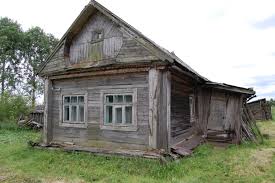Population decline, disappearing localities, decaying social and economic environment have been a major challenge for Russia’s path of development for several decades. This gives rise to the emerging black holes – degraded areas with no development prospects. Illegal business is thriving there, as the government often does not keep a hold of or is not up to speed on the developments in these areas. High crime rate, huge out migration by the youth, high poverty rate and low employment prevail there. Black holes are getting bigger and this trend will pick up from now on.
The black holes are mostly inhabited by ethnic Russians. The Far East has faced the largest depopulation of 23% starting from 1989. In Siberia, the population decreased by 9%, in the North-West – by 8%, in the Volga area – by 8%. The following regions dominate the depopulation rate for the past three years:

8 out of 10 regions are within the European part of Russia, and all of them have been long firmly grasped by the Russian ethnos.
Degradation is high for the localities where the Russian ethnic group is dominant and for the national republics of the Russian Federation. This can be clearly in evidence for the national republics of the Volga area – Chuvashia, Tatarstan and Bashkortostan, where different regions often have different ethnic composition, and localities can be grouped on ethnic grounds. Areas dominated by Chuvash, Tatars or Bashkirs are more developed as a rule and feature higher population density. Investment conditions, infrastructure and geographic features are exactly the same. Religion is not a determinant either, as the Chuvash, for example, are mostly Orthodox. Nobody but ethnic Russians feature such a phenomenon as a “drunken village”, i.e., a locality where all residents, children included, are constantly in a state of alcoholic intoxication that wields major influence on their daily life.
Degradation and depopulation affect not only villages, but also cities. Black holes appear not just in rural parts of the country, although they are dense there mainly. Villages in most regions inhabited by Russians have been depopulated in recent decades. There are almost 20 thousand dead villages in Russia today – without a single inhabitant. Less than 6 people live in 23 thousand villages. In general, there are less than 50 inhabitants in 57.7% of locations. Meanwhile, the share of urban population in Russia comes up to 75% and keeps on picking up. We are talking just about a few large cities, however. On average, 758 out of 1,067 Russian cities show depopulation. Most of these locations are the cities of up to 100 thousand people.
All large cities leading by population growth can be formed into several groups.
The first group: Moscow and St. Petersburg that are developing due to their status.
The second group: Makhachkala, Grozny, Yakutsk, Ulan-Ude – the capitals of the national republics, where the share of natives is rising and that of Russians is falling.
The third group: Tyumen, Tomsk, Krasnoyarsk – Siberia’s economic hubs, where the personal income is relatively high.
The fourth group: Voronezh, Krasnodar, Stavropol, Belgorod – cities where agriculture and industry are growing rapidly in the regions. It should be pointed out that there are a lot of ethnic assimilated Ukrainians there, affecting the living conditions.
The cities of demographic pitfalls show change for the worse, where black holes have already emerged or are shaping – Murmansk, Kurgan, Bryansk, Ivanovo, Oryol, Nizhny Novgorod, Petropavlovsk-Kamchatsky, Saratov, Arkhangelsk, Ulyanovsk, Kostroma, Tambov, Yaroslavl. All these cities are mainly inhabited by Russians and feature comfortable geographical conditions for living, apart from Petropavlovsk-Kamchatsky and Arkhangelsk. There is no social pressure on the Russian ethnos there. But they are touching bottom and signal depopulation.
Social and economic environment is so worn out that Russia will not succeed in restoring it for the foreseeable future. A third of the houses in Russia were built before 1970 and have exceeded their service life. On average, more than 44% of water supply networks, 30% of hot water supply networks, 45% of wastewater disposals are to be replaced in the regions, the official data only claim. Heating and water networks are worn out by 99% in such cities as Perm, for example. 4452 major accidents affected heat and water supply networks in Russia for the past seven years.
Just 42.4% of all roads comply with local standards. Moscow dominates here, moreover. The black holes – the Saratov, Arkhangelsk, Magadan Regions – feature the worst roads.
The scenario is disastrous for the countryside. Every fifth rural locality has no connection by hard surface roads. The length of rural internal roads has fallen by almost two thirds since 2000. 41% of rural households are connected to gas supply networks and 45% to water supply networks, but 30% use stove heating.
Not by any political will, this issue cannot be resolved – the costs are too high. Thus, social and economic environment will keep on touching bottom for the black holes, thus triggering even greater depopulation there. Russia is losing its transport and social infrastructure. Lots of areas will have to be reclaimed if necessary.
These key features cause strategic problems for the Kremlin, hard to be resolved. Moreover, they are constantly picking up.
Population in Russia, except for the capital area and St. Petersburg, is growing mainly for the national republics. They are often “cut off” from non-problematic areas of Russia by black holes or are located in Russia’s Asian part. Not just Moscow, the Moscow Region and St. Petersburg feature significant population growth. The population of Ingushetia, Chechnya, Tyva, Dagestan, Adygea, the Altai Republic, Sakha, Tatarstan, the Kabardino-Balkarian Republic, Buryatia has been actively growing over recent years. The black holes are between them and the developed areas of Russia. This is especially true of Tyva, the Altai Republic, Sakha, Tatarstan and, to a lesser extent, the Caucasian republics. This adds to further expansion by native ethnic groups in the areas previously inhabited by ethnic Russians. The gap in economy and geography between the regions gives additional boost for separatism in the republics.
As the Kremlin is unable to provide proper management for the areas and ensure their development, the regions have high chances to fall under control of neighboring states in future.
Black holes are a major concern for Russia already. The Kremlin is, in fact, losing its ability to control vast areas, both in Russia’s European and Asian parts. The Russian experts claim the European part of Russia only lacks 64 cities with a population of 100,000 to cover the entire area by zones of influence. Things are expected to get worse year by year, and Russia runs the risk of turning into a “patchwork” state by 2040, its parts loosely bound, thus ultimately triggering social and economic background for the once monolithic empire to break up.

Read also: Modern Russia. Basic Rule Ideology Schemes





